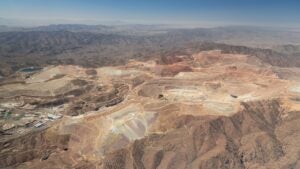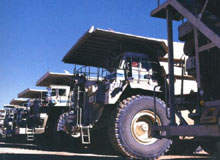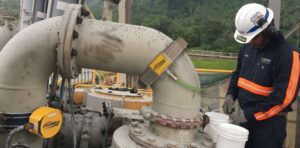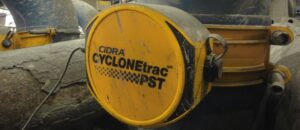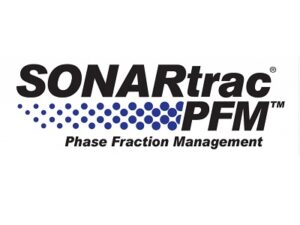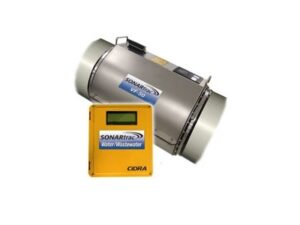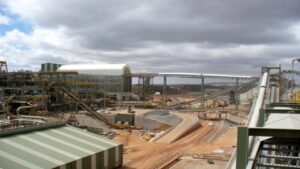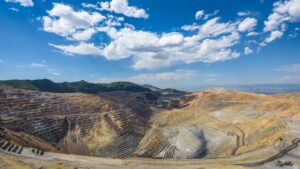Women Power Rocks at Kloof
Murray & Roberts Cementation recently completed the contract to construct two water retaining bulkhead plugs underground on 27 Level at Kloof No 10 shaft.
A remarkable aspect of the contract was the fact that two teams of women not only operated the batch plant, but were directly involved in the physical construction of the water plug. The plugs are six metres in length and designed to withstand a waterhead of 210m. For water outlet and control purposes, various diameters of 5 MPa pressure rated 316L stainless steel pipes and valves were cast into the plugs.
“Our commitment to uplifting the local communities and ensuring that we meet all the necessary criteria for BEE caused us to consider recruiting these teams. We have not regretted the decision – they work exceptionally well together as a team. With a contract of this nature, where attention to detail is critical, particularly in terms of cleaning the rock plums, they performed a superior job,” Deon Botha, cementation foreman on the contract for Murray & Roberts Cementation, says.
The women were capable of doing the same physical labour as men would have been doing on this contract. This included lifting 25 kg bags of cement, operating the batching plant, barring and packing rock plums as well as operating the cementitious mortar line used to intrude grout into the plug. The contract commenced in February 2006 and was successfully completed in August this year.
Prior to the commencement of the work, a full assessment of the site was conducted to ensure that it consisted of sound homogeneous rock. This was done to ensure safe anchoring and tightness of the plug and also to ensure its position was three times its length clear of structural weaknesses and geological features such as faults, fissures, shales, schist, friable or soft material and other excavations.
The client completed a three-dimensional structural geological map to confirm an acceptable uniformity and the mechanical competence. This exercise also took into account the effect of stress changes caused by mining in the area.
Following the assessment, barring was done from the plug’s access side. This entailed making safe the hanging and sidewalls by barring to solid rock over the entire proposed plug length with an overlap of three metres on the dry side. This was followed by footwall lashing, barring to solid rock and cleaning, also to the three-metre overlap.
The naturally barred shape of the haulage was surveyed at one-metre intervals and checked for a slight taper. “It is important that the area has a positive taper towards the dry side of the water plug,” Botha says.
All large smooth surfaces were roughened by chipping to ensure appropriate adhesion of the cementitious grout. “It is critical that the surface be sufficiently rough for a satisfactory bond of the mortar, but it cannot have any large loose pieces.”
Mortar intrusion needs to take place as a continuous operation, and this requires careful co-ordination, particularly at the batch plant to make sure that all raw materials are available. To facilitate work, all water was redirected away from the area of work.
The retaining wall at the wet side of the plug was constructed on the clean and barred footwall. The side and hanging walls were also barred to solid rock prior to the construction of the retaining wall. “We initially constructed a 500mm wide reinforced concrete wall to form the “wet end wall”,” Botha explains.
Plums were hand selected from hard durable rock (Witwatersrand quartzite) which generally has a fairly round shape with a size of approximately 75mm to 300mm and weight between 10kg and 35kg each. The plums used were free from flaky elongated slabs, shales, schist and other similar materials.
After selection from the mine’s waste dump, the rock plums were high pressure water jet sprayed, washed and brushed by hand to ensure they were free of grit, dust and adherent substances. This was done underground at the water plug site to eliminate contamination during transportation. Regular inspections of the plums for cleanliness was done prior to placement and again when in place. The information was recorded by the inspecting authority on a daily basis during this stage of the contract.
The prepared rock plums were then hand packed, starting from the retaining wall and creating a stacking format with a 45 degree slope to the footwall, filling in the spaces between the larger 200 – 300 mm rocks with smaller pieces of not less than 75mm. This arrangement was maintained until the packing was complete.
“This format of rock placing ensures that the final packing is at the top of the plug’s front wall and that the plug is fully packed. Rock plums were hand packed in a manner that kept voids to an absolute minimum,” Botha says.
During plug construction and as the plum packing progressed, a 10m length of long link chain (SABS 251/1971 – GR 300 LL chain) was coupled to the eyebolts. This extended the chain to the plug’s front wall shutter, which in turn was coupled to eye rods installed in the plug’s front wall shutter.
“Throughout the placing of the rock plums and mortar intrusions, a vigilant watch was kept to ensure plug materials were kept free of deleterious materials, particularly along the floor of the tunnel,” he explains.
The front wall consisted of a single timber shutter consisting of 100mm x 75mm vertical support struts and 220mm x 38mm horizontal shutter timbers. The installation of the shutter was raised in stages when the plum packing reached the front wall.
On completion of the plum packing, the timber joints and the timber scribing profile on the footwall, hanging wall and sides were hand plastered to prevent mortar leakage through these areas.
The batch plant was established a short distance from the site where the water plugs were being installed to facilitate ease of operation. Mortar was mixed using a high shear mixer and discharged into the storage tank, for draw off to feed the electro-hydraulic reciprocating high pressure cementation pump. The mortar design mix was based on the requirement of this specific application, the pressures and waterhead.
“On all our contracts, we check the quality of the mortar by means of a flow cone and SG scales to ensure that it conforms. Density and flow readings are taken hourly at the mixer and recorded,” Sakkie van Staden, cementation manager for Murray & Roberts Cementation, says.
On the Kloof contract, prior to intruding mortar, grouting pipes were checked for no blockages by blowing compressed air through each pipe. Pipes which have foreign objects that could not be cleared in this way were cleared with 20mm x 1.5m flush joint steel rods.
Mortar intrusion commenced on the bottom back feed pipes. When water bleed returned on the second pipe of the same layer of intrusion pipes, it was measured and recorded. When the mortar was discharged through this pipe, the process moved to the next layer and was so repeated on each layer until a full return was established through the last and most upper highpoint pipe. This pipe was left open for final highpoint grouting.
The mortar used was sufficiently fluid to penetrate voids in the aggregate or rock plums without its constituents separating out after mixing and before hardening. The mortar was intruded using high-pressure grout pumps against gravity to ensure that all voids were filled.
Four hours after mortar intrusions ceased, the highpoint grouting was done via the highpoint pipes. Grout injection techniques were used for the highpoint grouting process and ceased once the desired injection pressure was established. The pipe was then sealed.
The plug was allowed to cure until the plug concrete had reached ambient temperature, which took three to four weeks. Plug tightening was done when the concrete was cured, after which drilling commenced on the inner ring of the corner tightening pipes in preparation for the tightening exercise.
The drilling and tightening commenced by working in a clockwise direction from the top left. Drilling of the first hole was to the rock contact (mortar interface) and flushed clean from grit followed by the specified water acceptance and pressure tests.
Drilling water acceptance tests and cement injections were conducted in 500mm stages in a clockwise manner to a minimum depth of three metres into the rock or until zero acceptance. The corner holes followed with intermediate holes, also working in a clockwise direction. On completion of the inner ring, the same sequences were followed on the next ring of tightening pipes followed by the remaining rings of tightening pipes working towards the front plug wall (dry side).
Plug No 1 on 27 Level haulage has a maximum waterhead of 210m and an applied pressure of 2,060kPa. It has a mean width of 3.5m and a height of 3.8m. Plug No 2 on 27 Level haulage has the same maximum water head and applied pressure but is 3.5m wide and 4.8m high.
More About Murray & Roberts Cementation
Murray & Roberts has a history of more than 100 years serving the mining industry and has become recognised as the leading mining contracting group worldwide with a presence in Africa, Australia and Canada. When the mining industry contracts with Murray & Roberts Cementation, RUC Mining Contractors Australia and Cementation Canada it engages with partners that have an incomparable global track record.
Murray & Roberts, through the three companies, has the infrastructure and resources to mobilise teams from across the continents and can deliver total project solutions across the full value chain of any mine operation. This covers the spectrum from specialist pre-feasibility and feasibility studies, engineering and mine design through to construction management. It services further cover shaft sinking, tunnelling, exploration drilling, raiseboring and contract mining.
As a company, Murray & Roberts Cementation is committed to world-class fulfilment, safety and a healthy environment. Our leadership and the personnel offer clients unsurpassed industry knowledge, skill and experience in all aspects of mining project delivery, from concept to commissioning.
The company aims to be the first choice mining contractor in the global market offering the best value hard rock underground mine development and contracting mining solutions.


